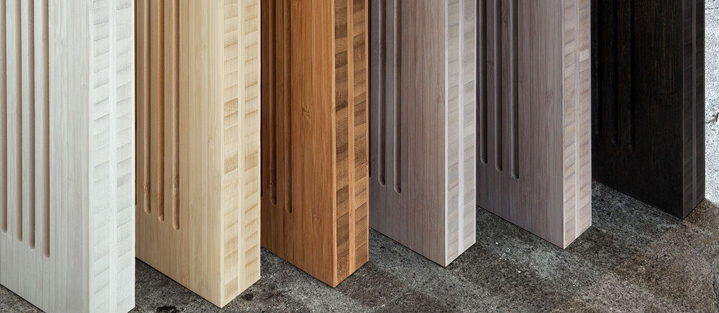Paint-free doors are a unique option for contemporary homeowners looking for both style and functionality in the rapidly changing field of interior design. As more consumers look for low-maintenance and environmentally conscious products, many an interior door factory has shifted its focus toward innovative paint-free solutions. These designs, while once considered niche, are now a core offering from progressive wood door manufacturers aiming to meet the demands of a dynamic market.
What Are Paint-Free Doors?
Paint-free doors are manufactured without traditional surface painting. Instead, they feature decorative finishes such as laminated films, PVC coatings, or eco-friendly veneers that offer both aesthetic appeal and functional durability. These surfaces can mimic wood grains, solid colors, or textured patterns, all while eliminating the need for chemical-heavy paints and finishing agents.
Unlike conventional doors that require multiple painting and drying stages, paint-free designs simplify the manufacturing process and reduce exposure to volatile organic compounds (VOCs), making them a safer and more eco-conscious choice for households and public buildings alike.

Advantages of Paint-Free Door Technology
1. Low Maintenance
Paint-free doors are ideal for busy homes and commercial spaces where daily wear and tear are unavoidable. Their surfaces resist scratches, moisture, and staining, making them far easier to clean and maintain over time compared to painted doors.
2. Environmental Benefits
For an interior door factory focusing on sustainable practices, paint-free technology offers a significant environmental advantage. These doors eliminate the need for solvent-based paints, reducing harmful emissions during manufacturing.
3. Cost Efficiency
From a production standpoint, paint-free doors reduce time and labor costs. They bypass several traditional steps such as sanding, priming, painting, and polishing. This streamlining leads to faster lead times and competitive pricing for both domestic and export markets.
Innovation in Surface Materials
Modern wood door manufacturers now work with a variety of advanced materials to create paint-free doors that are both stylish and durable. Popular options include:
PVC Laminates: Known for their flexibility, water resistance, and broad color range.
Polypropylene (PP) Films: A more eco-friendly alternative to PVC, offering similar visual qualities with reduced environmental impact.
Melamine Surfaces: Hard-wearing and available in countless textures and patterns.
Eco-Veneers: Thin wood-like films that imitate natural grains with high visual realism.
These materials are not only aesthetically appealing but also customizable, giving customers a wide range of design options without the need for traditional paint.
Growing Popularity in Residential and Commercial Settings
Paint-free doors are now widely used in urban apartments, offices, hotels, and commercial interiors. Their clean look fits well with lessist and contemporary styles, while their ease of maintenance suits high-traffic environments. Furthermore, these doors often come in preassembled formats, simplifying installation for contractors and interior decorators.
Interior designers are also drawn to paint-free doors because of the consistent surface quality and color matching they offer—something that painted surfaces can sometimes lack due to variations in manual application.
Integration with Modern Door Designs
Today’s paint-free doors are not limited to flat panels. Many feature:
3D patterns and groove lines for added texture
Glass inserts for natural light flow
Metallic edge trims for a modern industrial look
By combining these features, interior door factories are producing products that align with global design trends while maintaining functional advantages.
As the market continues to evolve, paint-free doors are set to become a mainstay in both residential and commercial interiors, offering an ideal blend of form, function, and future-focused design.

 English
English 中文简体
中文简体